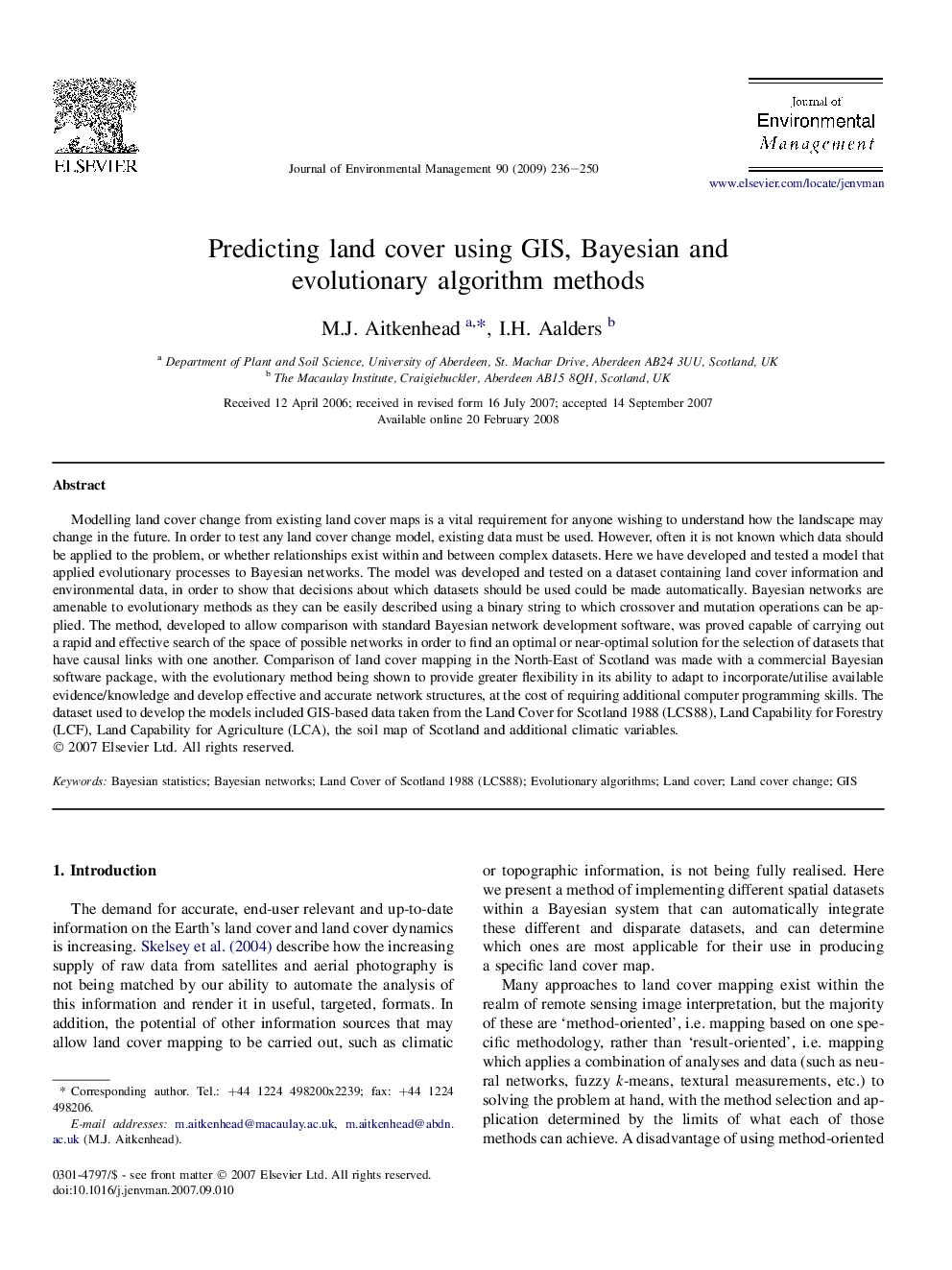| Article ID | Journal | Published Year | Pages | File Type |
|---|---|---|---|---|
| 1058090 | Journal of Environmental Management | 2009 | 15 Pages |
Modelling land cover change from existing land cover maps is a vital requirement for anyone wishing to understand how the landscape may change in the future. In order to test any land cover change model, existing data must be used. However, often it is not known which data should be applied to the problem, or whether relationships exist within and between complex datasets. Here we have developed and tested a model that applied evolutionary processes to Bayesian networks. The model was developed and tested on a dataset containing land cover information and environmental data, in order to show that decisions about which datasets should be used could be made automatically. Bayesian networks are amenable to evolutionary methods as they can be easily described using a binary string to which crossover and mutation operations can be applied. The method, developed to allow comparison with standard Bayesian network development software, was proved capable of carrying out a rapid and effective search of the space of possible networks in order to find an optimal or near-optimal solution for the selection of datasets that have causal links with one another. Comparison of land cover mapping in the North-East of Scotland was made with a commercial Bayesian software package, with the evolutionary method being shown to provide greater flexibility in its ability to adapt to incorporate/utilise available evidence/knowledge and develop effective and accurate network structures, at the cost of requiring additional computer programming skills. The dataset used to develop the models included GIS-based data taken from the Land Cover for Scotland 1988 (LCS88), Land Capability for Forestry (LCF), Land Capability for Agriculture (LCA), the soil map of Scotland and additional climatic variables.
